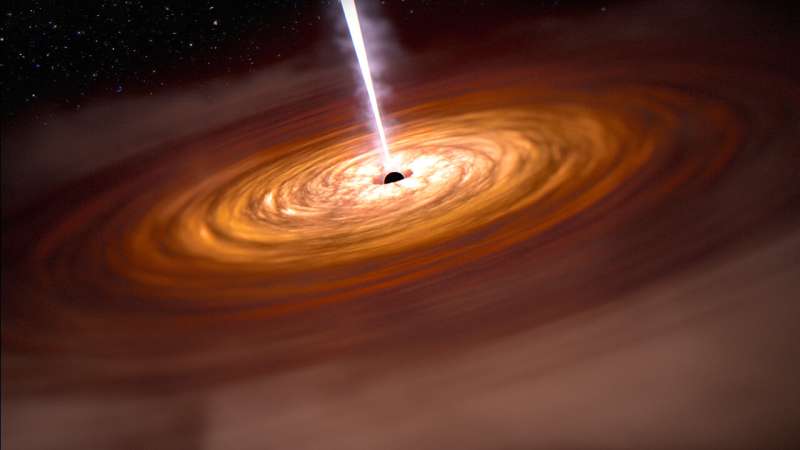January 13, 2024 report
This article has been reviewed according to Science X's editorial process and policies. Editors have highlighted the following attributes while ensuring the content's credibility:
fact-checked
trusted source
proofread
Saturday Citations: The Dark Energy Survey; the origins of colorblindness; the evolution of heads

The Dark Energy Survey took an entire decade to produce a value for the cosmological constant—and it's smaller than you might think! There were other stories as well, including one about primeval black holes, and because I am inescapably drawn by the relentless gravity of black hole news, it's included below, along with two other stories related in one way or another to heads.
Humans perceptive
Dogs' primary sense is olfactory, and if their visual perception flags something interesting in the environment, the first thing they do is stick their cute little noses in it. But the opposite is true for humans; we are able to perceive millions of colors, but only a fraction of the olfactory stimuli dogs are usually way too engaged with.
If you smell natural gas in your house, you go looking for the source with your cute little retinas and their super-dense constellation of photoreceptive cells to determine that one of the gas knobs on the stove is open. Researchers at Johns Hopkins University grew retinal organoids in a lab to determine how human visual perception develops.
They discovered that retinoic acid determines whether a cone cell will specialize in sensing red or green light; the only species on the planet with red-light visual perception are humans and related primates.
The researchers found that high levels of retinoic acid at an early developmental stage correlated with higher ratios of green cones, which results in red-green colorblindness. Ultimately, the researchers hope to apply findings derived from retinal organoids to treatments for macular degeneration, in which photoreceptive cells in the center of the retina are lost.
Heads clarified
At some point in history, as vertebrates evolved, heads started popping out—theorists believe that either segmental elements of the trunk evolved into a skull or that the head evolved as a separate, unsegmented body part.
By studying the development of lampreys using advanced microscopy techniques, researchers at the University of Fukui have shed light on the origins of primitive segments and the head mesoderm in vertebrates. In their study, they determined that the evolutionary mechanism for the development of the head mesoderm was the segregation between the front and back elements in primitive organisms.
"Our findings revealed a different evolutionary origin for the vertebrate head mesoderm, suggesting that it evolved from the repatterning of an ancient mesoderm and diversified even before the emergence of jawed vertebrates," said Assistant Professor Takayuki Onai, one of the contributors.
Holes outsized
The James Webb Space Telescope and the unrelenting avalanche of data it's collected have yielded a new understanding of primeval black holes at the center of galaxies in the early universe—specifically that they were much larger in relation to the galaxies they occupied than those of the observable universe today.
There's a specific and predictable scaling relation in the contemporary universe between supermassive black holes and the stellar populations they occupy that was different when the universe was young.
"We have learned that distant, young galaxies violate the relation between black hole mass and stellar mass that is very well established in nearby, mature galaxies: These primeval black holes are undoubtedly overmassive relative to the stellar population of their hosts," says Roberto Maiolino, a professor at the University of Cambridge.
Number calculated
In easily the biggest physics story this week, the 10-year-long Dark Energy Survey announced its final measurement of a universal parameter called "w"—the equation of state of dark energy. Astronomers have known since the 1990s that not only is the universe expanding, but the rate of expansion increases over time.
Because the force driving this acceleration is a mystery, physicists called it "dark energy." The value of parameter "w" describes the ratio of pressure over energy density, and physicists believe that its value should be -1. The Dark Energy Survey used the same cosmic yardstick researchers used to detect the accelerating expansion 25 years ago—Type Ia supernovae. But they had a much larger sample size over a much greater area, and crunching the data yielded a w value of… not quite -1.
In fact, they landed on -0.8, which is more precise than previous measurements, but with an uncertainty more in the realm of horseshoes and hand grenades than the actual value of the cosmological constant. Further studies using a larger sample size and decades more effort could produce a more precise value. As bad writers who can't think of a kicker might type right before slumping into their chairs and falling asleep, "Stay tuned!"
© 2024 Science X Network





















